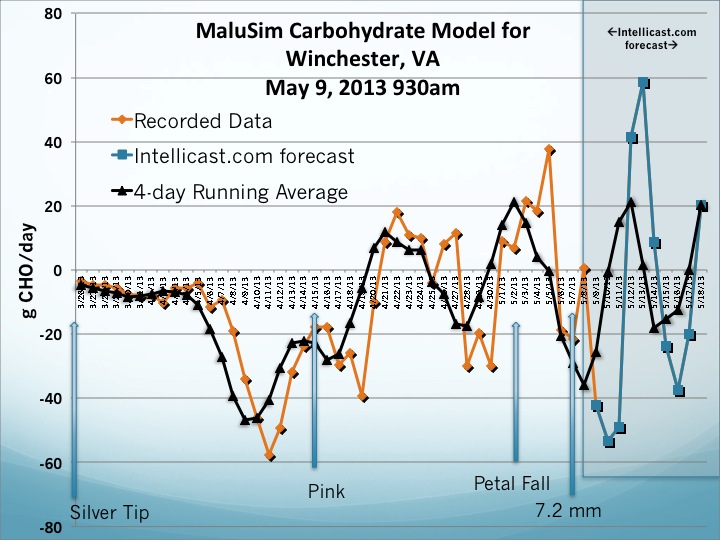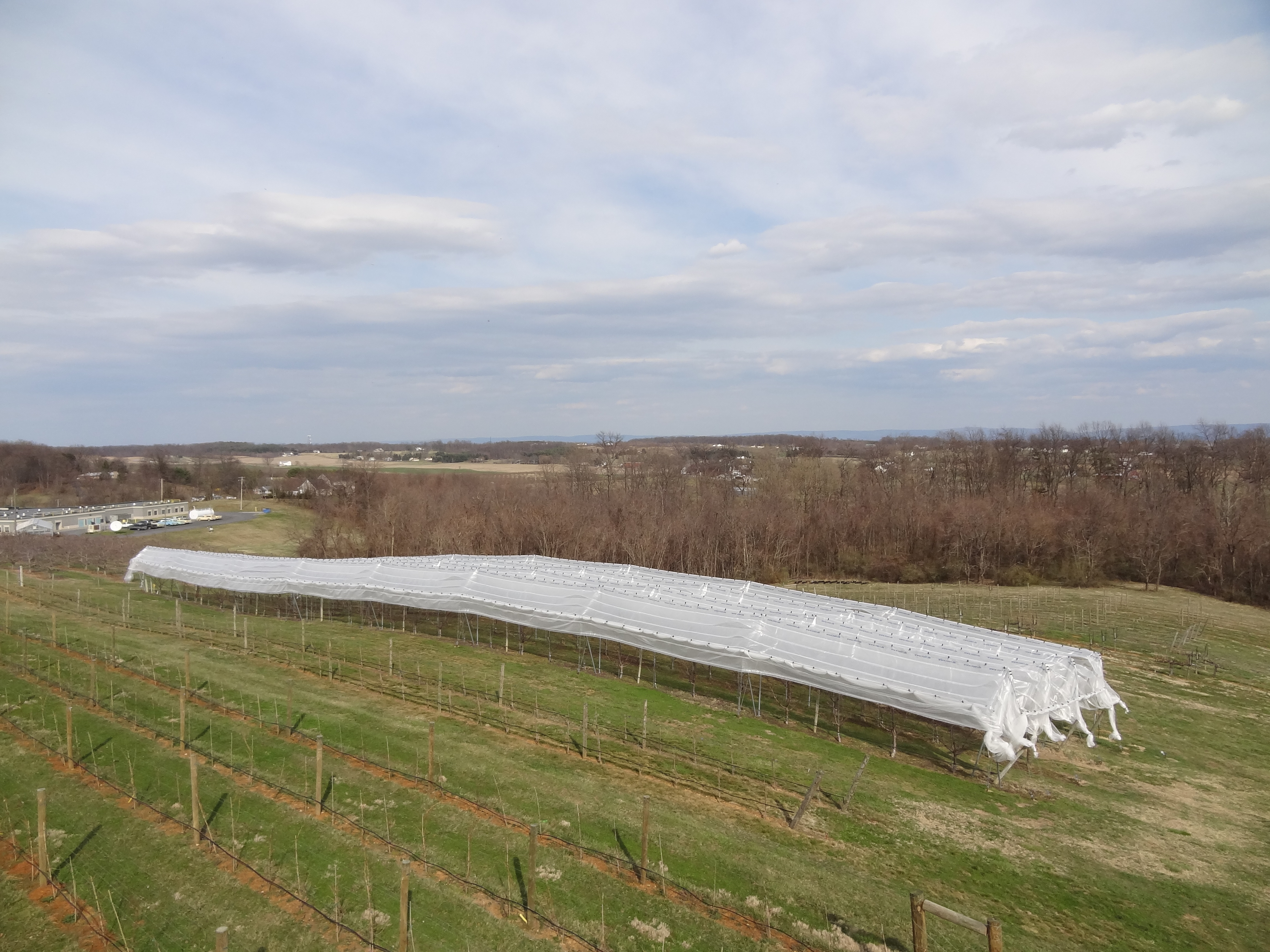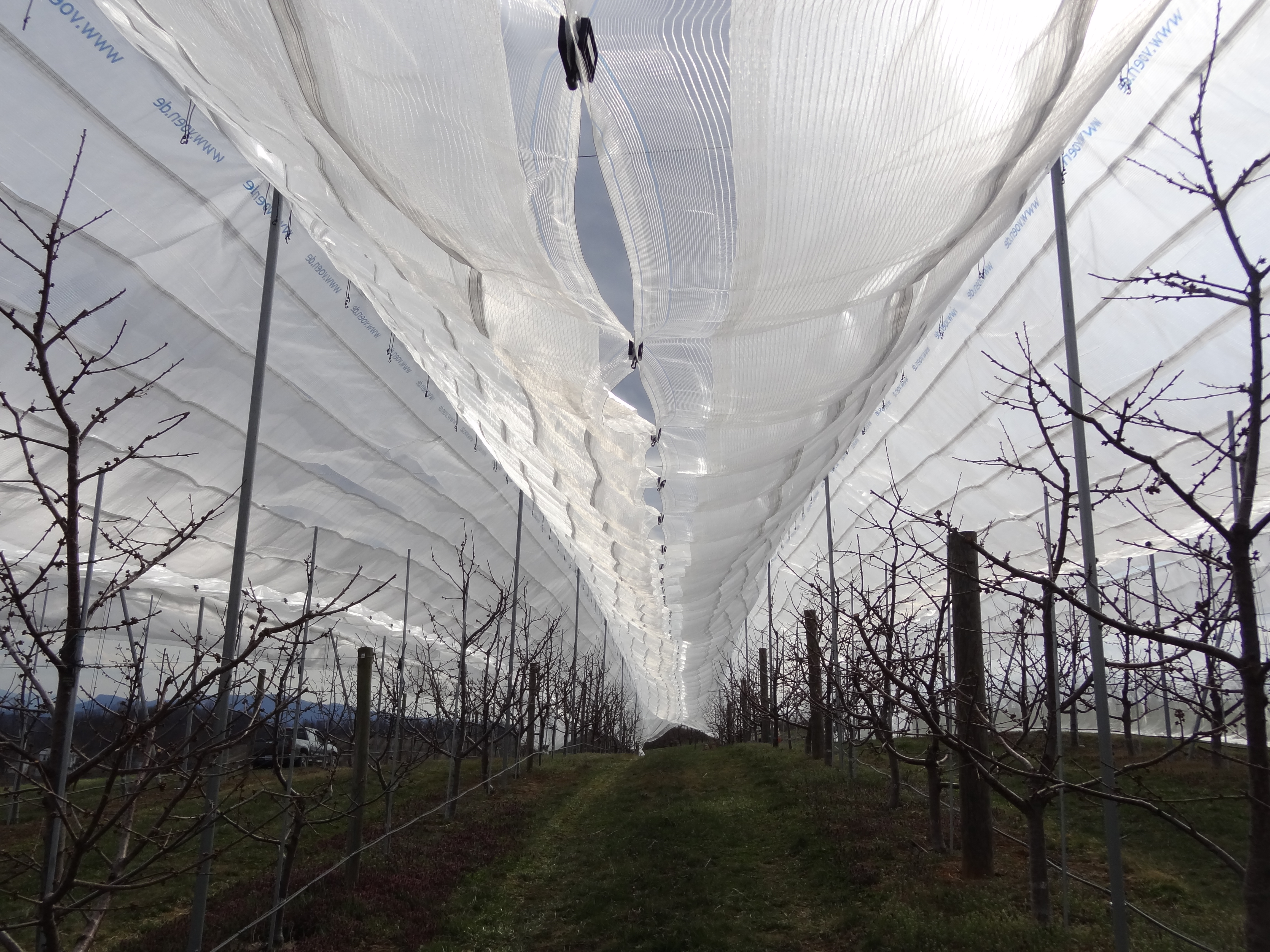This it the 28th year that researchers at the Alson H. Smith, Jr. AREC have recorded Golden Delicious and Red Delicious apple maturity data from orchards based in and around Winchester. Including 2013, data for Empire has been taken for twelve years and Gala for six years. In recent years, we have also added other commercially important cultivars to the analyses in order to generate long term averages. These data provide an interesting insight into the current season’s harvest, and can help growers make decisions on when to pick different blocks.
As discussed in a previous post, bloom date was about three weeks later than in 2012 and fairly close to the long-term averages. This should mean that harvest dates will be relatively “normal” or at least more similar to harvest dates in the late 1990’s through early 2000’s than they have been in the last several years.
As of this week, most growers in the Northern Shenandoah region are finishing up picking Ginger Golds, and have started picking Gala and Honeycrisp. Some growers in Central Virginia are finishing Gala and starting with Golden Delicious.
Many of the Golden Delicious blocks that we tested this week had very nice fruit finish, with minimal russet. Golden Delicious maturity was quite variable in the blocks that we tested, and it appears that some blocks will be ready to harvest within the next week, while others are probably 7-10 days away from being ready to harvest. The use of ReTain by some growers may explain some of this variability.
With the cool nights that we have experienced in August, red skinned cultivars have developed better than average color. However, be sure to check the starch and sugar levels before picking to be sure that the apples are mature enough to pick. Many Red Delicious apples that we tested this week had great color but very little starch degradation and soluble solids were only at 9-10 Brix.
Below are the data from this year’s end-of-August apple maturity sampling. In each year, the samples were taken around August 25 (August 26 this year) and consist of apples from the AREC and a few local growers. Thanks to Dave Carbaugh and Abby Kowalski for collecting and testing the fruit. Please refer to my post from last year if you need help interpreting the different maturity indices. You can also download a pdf of the 2013 Annual August Maturity Report.
|
Golden Delicious Maturity Report 1986-2013 |
|
|||||
| Year |
Background Color (1-4)* |
Firmness (lbs) |
Soluble Solids (ºBrix) |
Starch-iodine Index (1-8)** |
Ethylene (ppm) |
Bloom Date |
| 1986 |
2.2 |
19.5 |
12.7 |
|||
| 1987 |
20.0 |
12.2 |
||||
| 1988 |
18.6 |
11.0 |
1.5 |
|||
| 1989 |
17.7 |
10.3 |
2.0 |
|||
| 1990 |
18.0 |
10.5 |
1.6 |
|||
| 1991 |
1.8 |
19.7 |
12.0 |
2.1 |
||
| 1992 |
1.8 |
20.1 |
12.0 |
1.6 |
||
| 1993 |
1.9 |
19.8 |
11.6 |
1.5 |
||
| 1994 |
2.3 |
19.8 |
12.0 |
1.7 |
||
| 1995 |
0.9 |
18.8 |
10.9 |
2.1 |
||
| 1996 |
2.9 |
19.6 |
11.2 |
2.9 |
||
| 1997 |
2.0 |
21.8 |
11.7 |
2.0 |
||
| 1998 |
2.5 |
19.2 |
12.2 |
2.1 |
||
| 1999 |
1.9 |
20.3 |
11.7 |
1.4 |
||
| 2000 |
1.8 |
17.5 |
11.9 |
2.5 |
||
| 2001 |
1.9 |
20.1 |
11.0 |
1.4 |
||
| 2002 |
2.2 |
21.2 |
11.4 |
2.1 |
||
| 2003 |
2.6 |
20.3 |
11.1 |
1.2 |
||
| 2004 |
2.3 |
18.2 |
12.3 |
2.0 |
||
| 2005 |
1.8 |
20.1 |
11.4 |
1.7 |
||
| 2006 |
1.9 |
18.5 |
12.4 |
1.8 |
||
| 2007 |
1.6 |
18.0 |
12.3 |
1.6 |
||
| 2008 |
2.1 |
18.3 |
12.9 |
1.6 |
22-23 Apr |
|
| 2009 |
1.8 |
17.2 |
12.4 |
1.7 |
22-Apr |
|
| 2010 |
1.6 |
18.6 |
12.9 |
1.4 |
13-Apr |
|
| 2011 |
2.1 |
20.1 |
12.9 |
1.2 |
20-Apr |
|
| 2012 |
2.5 |
18.5 |
13.0 |
1.3 |
0.00 |
2-Apr |
| 2013 |
2.2 |
18.3 |
11.9 |
2.2 |
0.17 |
25-Apr |
| Mean |
2.0 |
19.2 |
11.9 |
1.8 |
17-Apr |
|
| Max |
2.9 |
21.8 |
13.0 |
2.9 |
25-Apr |
|
| Min |
0.9 |
17.2 |
10.3 |
1.2 |
2-Apr |
|
| * 1 = green, 2 = light green, 3 = yellowish green, 4 = yellow. | ||||||
| ** 1 = 100% starch, 5 = 60% starch, 8 = 0% starch. | ||||||
|
Red Delicious Maturity Report 1986-2013 |
||||||
| Year |
Red Color (%) |
Firmness (lbs) |
Soluble Solids (ºBrix) |
Starch-iodine Index (1-8)* |
Ethylene (ppm) |
Bloom Date |
| 1986 |
72.0 |
18.8 |
11.2 |
|||
| 1987 |
68.0 |
19.8 |
10.8 |
|||
| 1988 |
54.0 |
18.4 |
10.0 |
1.6 |
||
| 1989 |
69.0 |
18.6 |
8.7 |
1.6 |
||
| 1990 |
73.0 |
18.1 |
8.9 |
1.5 |
||
| 1991 |
69.0 |
18.8 |
10.4 |
1.6 |
||
| 1992 |
76.0 |
20.8 |
10.2 |
1.3 |
||
| 1993 |
68.0 |
21.7 |
9.5 |
1.7 |
||
| 1994 |
68.0 |
19.7 |
9.5 |
1.9 |
||
| 1995 |
68.0 |
19.2 |
9.1 |
1.6 |
||
| 1996 |
62.5 |
19.3 |
8.9 |
2.0 |
25-Apr |
|
| 1997 |
66.7 |
22.4 |
9.4 |
1.2 |
25-Apr |
|
| 1998 |
81.9 |
19.3 |
9.9 |
2.5 |
15-Apr |
|
| 1999 |
65.5 |
19.8 |
10.5 |
1.9 |
28-Apr |
|
| 2000 |
87.4 |
16.2 |
9.6 |
2.3 |
11-Apr |
|
| 2001 |
61.0 |
20.5 |
8.3 |
1.8 |
28-Apr |
|
| 2002 |
60.2 |
21.4 |
9.4 |
2.1 |
22-Apr |
|
| 2003 |
58.4 |
20.4 |
8.5 |
1.9 |
22-Apr |
|
| 2004 |
88.2 |
16.7 |
10.0 |
2.3 |
20-Apr |
|
| 2005 |
73.7 |
18.7 |
9.2 |
2.0 |
24-Apr |
|
| 2006 |
63.8 |
18.7 |
10.7 |
2.0 |
16-Apr |
|
| 2007 |
81.1 |
18.1 |
11.0 |
1.7 |
22-Apr |
|
| 2008 |
86.6 |
18.1 |
9.4 |
2.0 |
22-Apr |
|
| 2009 |
79.2 |
17.5 |
10.2 |
1.9 |
24-Apr |
|
| 2010 |
65.9 |
18.2 |
11.5 |
1.7 |
8-Apr |
|
| 2011 |
67.5 |
19.8 |
11.5 |
2.1 |
21-Apr |
|
| 2012 |
92.1 |
18.2 |
11.9 |
1.8 |
0.03 |
29-30-Mar |
| 2013 |
91.3 |
18.4 |
9.8 |
2.0 |
0.25 |
23-Apr |
| Mean |
72.1 |
19.1 |
9.9 |
1.8 |
0.1 |
20-Apr |
| Max |
92.1 |
22.4 |
11.9 |
2.5 |
0.3 |
28-Apr |
| Min |
54.0 |
16.2 |
8.3 |
1.2 |
0.0 |
29-30-Mar |
| * 1 = 100% starch, 5 = 60% starch, 8 = 0% starch. | ||||||
|
Gala Maturity Report 2008-2013 |
|
|||||
| Year |
Red Color (%) |
Firmness (lbs) |
Soluble Solids (ºBrix) |
Starch-iodine Index (1-8)* |
Ethylene (ppm) |
Bloom Date |
| 2008 |
93.5 |
18.3 |
13.6 |
5.6 |
21-Apr |
|
| 2009 |
86.8 |
17.5 |
13.4 |
4.5 |
22-Apr |
|
| 2010 |
78.0 |
16.3 |
14.9 |
6.4 |
9-Apr |
|
| 2011 |
77.5 |
19.4 |
13.7 |
4.9 |
19-Apr |
|
| 2012 |
91.1 |
18.0 |
13.2 |
4.1 |
7.13 |
29-30-Mar |
| 2013 |
91.1 |
18.0 |
12.4 |
5.4 |
1.71 |
23-Apr |
| Mean |
86.3 |
17.9 |
13.5 |
5.2 |
4.4 |
15-Apr |
| Max |
93.5 |
19.4 |
14.9 |
6.4 |
7.1 |
23-Apr |
| Min |
77.5 |
16.3 |
12.4 |
4.1 |
1.7 |
29-30-Mar |
| * 1 = 100% starch, 5 = 60% starch, 8 = 0% starch. | ||||||
|
Empire Maturity Report 2002-2013 |
|
|||||
| Year |
Red Color (%) |
Firmness (lbs) |
Soluble Solids (ºBrix) |
Starch-iodine Index (1-8)* |
Ethylene (ppm) |
Bloom Date |
| 2002 |
42.0 |
25.3 |
10.4 |
2.1 |
||
| 2003 |
60.4 |
21.9 |
9.6 |
1.7 |
||
| 2004 |
78.1 |
17.2 |
10.9 |
2.2 |
||
| 2005 |
55.3 |
20.3 |
10.1 |
1.9 |
||
| 2006 |
46.0 |
19.7 |
10.7 |
2.1 |
||
| 2007 |
64.0 |
17.9 |
10.6 |
2.1 |
||
| 2008 |
66.3 |
18.2 |
11.0 |
2.1 |
21-Apr |
|
| 2009 |
52.4 |
16.6 |
10.9 |
1.1 |
20-Apr |
|
| 2010 |
44.3 |
18.1 |
10.7 |
1.8 |
||
| 2011 |
49.8 |
19.7 |
11.2 |
2.0 |
||
| 2012 |
85.9 |
19.2 |
12.5 |
1.7 |
0.01 |
29-Mar |
| 2013 |
63.0 |
18.6 |
10.6 |
1.5 |
0.04 |
21-Apr |
| Mean |
59.0 |
19.4 |
10.8 |
1.9 |
0.0 |
15-Apr |
| Max |
85.9 |
25.3 |
12.5 |
2.2 |
0.0 |
21-Apr |
| Min |
42.0 |
16.6 |
9.6 |
1.1 |
0.0 |
29-Mar |
| * 1 = 100% starch, 5 = 60% starch, 8 = 0% starch. | ||||||
|
Maturity Report – Other Varieties 2011 |
||||||
| Cultivar |
Red Color (%) |
Firmness (lbs) |
Soluble Solids (ºBrix) |
Starch-iodine Index (1-8)* |
||
| HoneyCrisp |
66.2 |
15.8 |
13.0 |
5.1 |
||
| Idared |
17.0 |
19.9 |
11.1 |
1.2 |
||
| * 1 = 100% starch, 5 = 60% starch, 8 = 0% starch. | ||||||
|
Maturity Report – Other Varieties 2012 |
|
|
||||
| Cultivar |
Red Color (%) |
Firmness (lbs) |
Soluble Solids (ºBrix) |
Starch-iodine Index (1-8)* |
Ethylene (ppm) |
Bloom Date |
| Fuji Early Strain |
65.5 |
16.7 |
14.7 |
4.1 |
0.03 |
5-Apr |
| Fuji Late Strain |
26.0 |
20.9 |
12.1 |
2.1 |
0.03 |
5-Apr |
| Idared |
36.7 |
17.0 |
12.3 |
1.3 |
0.00 |
2-Apr |
| Rome |
39.8 |
22.5 |
12.3 |
1.5 |
. |
12-Apr |
| York |
41.8 |
22.4 |
10.7 |
1.0 |
0.00 |
3-Apr |
| * 1 = 100% starch, 5 = 60% starch, 8 = 0% starch. | ||||||
|
Maturity Report – Other Varieties 2013 |
|
|
||||
| Cultivar (number of orchards tested) |
Red Color (%) |
Firmness (lbs) |
Soluble Solids (ºBrix) |
Starch-iodine Index (1-8)* |
Ethylene (ppm) |
Bloom Date |
| Cameo (1) |
33.5 |
18.1 |
10.2 |
1.7 |
0.53 |
N/A |
| Fuji Early Strain (2) |
80.3 |
16.3 |
13.6 |
4.3 |
1.51 |
25-Apr |
| Ginger Gold (2) |
3.9** |
16.0 |
12.8 |
3.5 |
0.00 |
24-Apr |
| Idared (6) |
41.1 |
17.5 |
10.1 |
1.2 |
0.12 |
23-Apr |
| Jonagold (1) |
35.5 |
18.7 |
11.8 |
2.8 |
0.00 |
23-Apr |
| Rome (1) |
21.2 |
24.6 |
9.2 |
2 |
0.00 |
1-May |
| York (1) |
53.5 |
24.4 |
9.4 |
1 |
1.20 |
25-Apr |
| * 1 = 100% starch, 5 = 60% starch, 8 = 0% starch. | ||||||
| ** 1 = green, 2 = light green, 3 = yellowish green, 4 = yellow. | ||||||

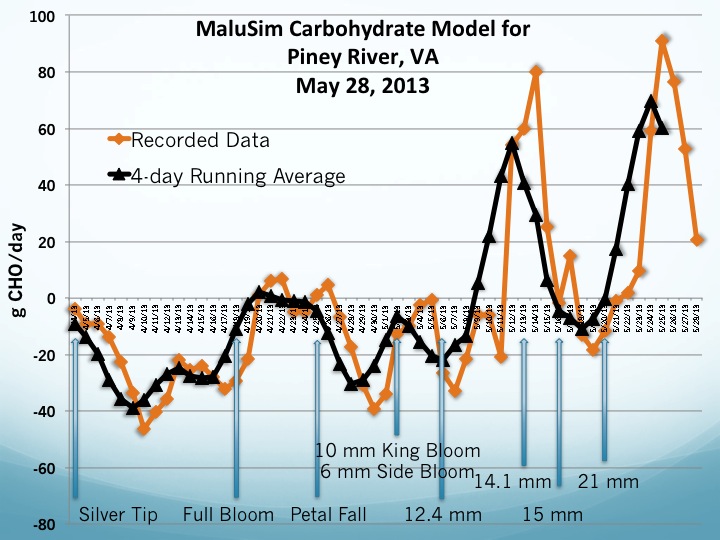

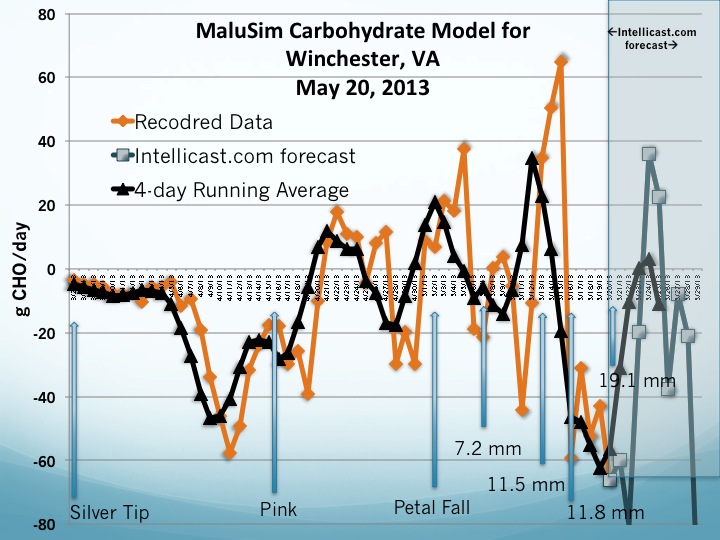
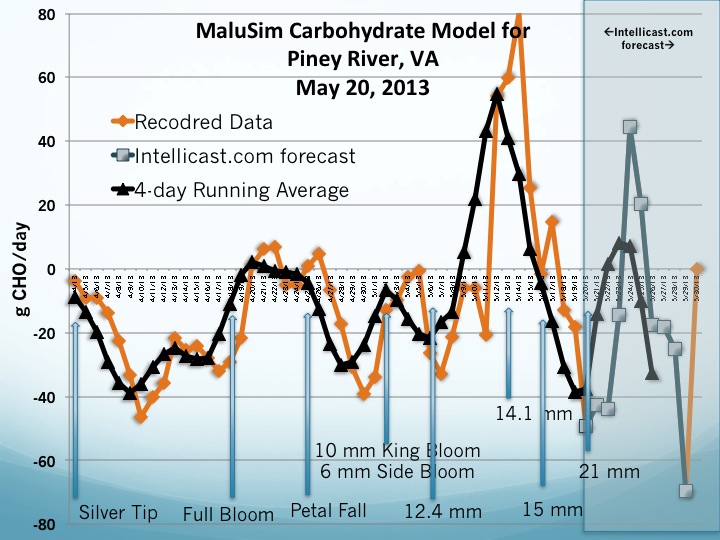

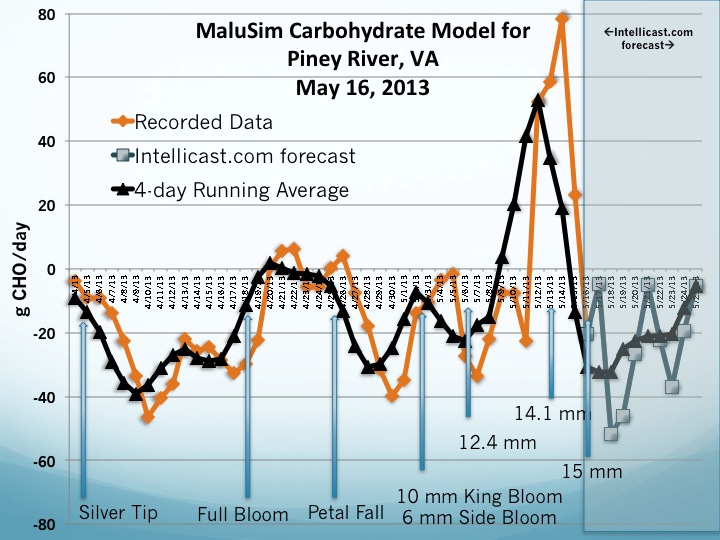
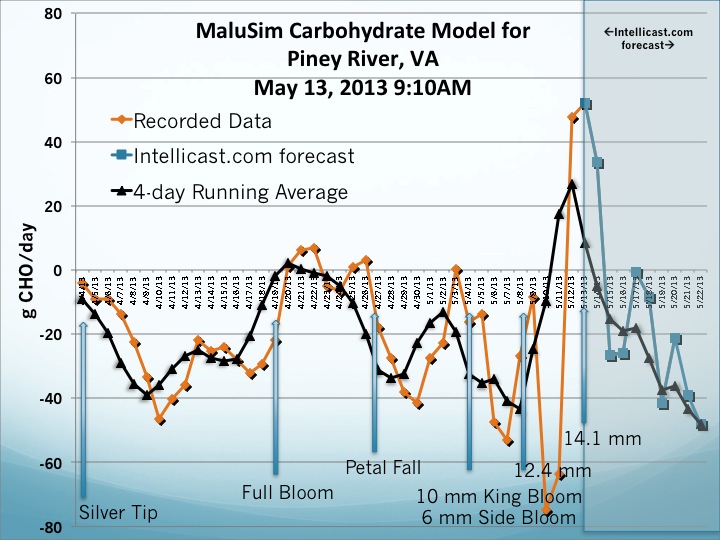
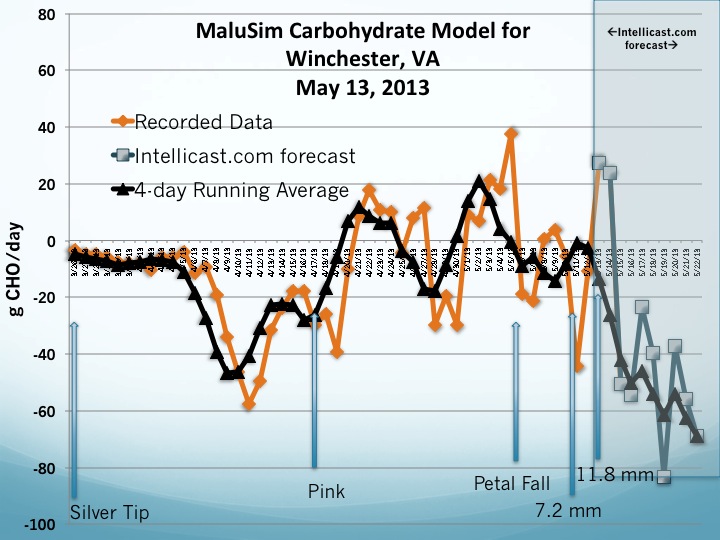 The MaluSim carbohydrate model was run on May 13 for both Winchester and Central Virginia.
The MaluSim carbohydrate model was run on May 13 for both Winchester and Central Virginia.
